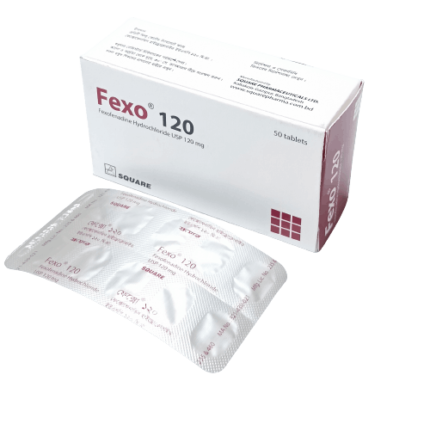Sardopa 500
98.00৳ Strip
- Sardopa is an antihypertensive medication for managing hypertension, especially in patients with specific needs like pregnant women.
- Its active ingredient, methyldopa, reduces adrenergic signals in the brain, resulting in lower blood pressure.
- Available in various forms, including oral and intravenous.
- Typically well tolerated but requires careful monitoring for potential side effects.
- Always consult a healthcare professional before use.
 Brand
Brand
|
Incepta Pharmaceuticals Ltd |
|---|---|
 Generics
Generics
|
Methyldopa |
 Type
Type
|
Tablet |
Indications
Sardopa is prescribed for the management of hypertension.
Always consult a registered healthcare professional before using any medication.
Pharmacology
Methyldopa, also known as α-methyldopa, is a centrally acting sympatholytic and antihypertensive agent. As an analog of DOPA (3,4‐hydroxyphenylalanine), it functions as a prodrug, requiring conversion to an active metabolite for its therapeutic effects. Methyldopa acts as an agonist at alpha(α)-2 adrenergic receptors, which reduces adrenergic neuronal outflow and decreases vasoconstrictor signals. It exists in two isomers: D-α-methyldopa and L-α-methyldopa, with the latter being the active form.
Introduced in 1960, methyldopa was particularly beneficial for specific groups, including pregnant women and those with renal insufficiency. Although newer antihypertensive agents have largely replaced it, methyldopa is still used alone or in combination with hydrochlorothiazide. It is also available as an intravenous injection for managing hypertension when oral medication isn’t feasible and for treating hypertensive crises.
Dosage & Administration
Adults:
- Initiation of Therapy: The typical starting dose is 250 mg two to three times daily during the first 48 hours. The dosage may then be adjusted every two days based on response. To minimize sedation, consider increasing the dose in the evening. If transitioning from other antihypertensives, dose adjustments may be necessary. For patients on non-thiazide antihypertensives, the initial dose of methyldopa should not exceed 500 mg daily in divided doses; if added to a thiazide, the thiazide dose can remain unchanged.
- Maintenance Therapy: The usual daily dose ranges from 500 mg to 2 g, divided into two to four doses. Although some patients may require higher doses, the maximum recommended daily dosage is 3 g. Tolerance may develop between two to three months of therapy. Adding a diuretic or increasing methyldopa dosage often helps restore effective blood pressure control. Thiazide diuretics can be introduced at any point during treatment, especially if blood pressure control is insufficient on 2 g of methyldopa daily. Since methyldopa is primarily excreted by the kidneys, patients with renal impairment may need lower doses. Elderly patients may be more sensitive and should be started on lower doses.
Pediatric Use: The initial dosage for children is typically 10 mg/kg of body weight daily, administered in two to four doses, with adjustments made for adequate response. The maximum dosage is 65 mg/kg or 3 g daily, whichever is lower.
Always consult a registered healthcare professional before using any medication.
Interaction
Sardopa may enhance the effects of other antihypertensive medications, necessitating dose adjustments. Patients may also need reduced anesthetic doses while on Sardopa. Careful monitoring is required when combining Sardopa with lithium to avoid toxicity. Co-administration with ferrous sulfate or ferrous gluconate is not recommended.
Contraindications
Methyldopa is contraindicated in patients who:
- Have active hepatic diseases, such as acute hepatitis or cirrhosis
- Have previously experienced liver disorders related to methyldopa therapy
- Are hypersensitive to any ingredient in the product
- Are currently on monoamine oxidase (MAO) inhibitors
Side Effects
Common side effects may include transient sedation, headaches, fatigue, and weakness. Rarely, systemic effects such as angina pectoris, congestive heart failure, orthostatic hypotension, edema, bradycardia, pancreatitis, and gastrointestinal disturbances may occur. Significant adverse effects are infrequent, and Sardopa is generally well tolerated.
Pregnancy & Lactation
Methyldopa is classified as pregnancy category B and can appear in breast milk. Caution is advised when administering to nursing mothers.
Precautions & Warnings
Use Sardopa cautiously in individuals with a history of liver disease. Some patients may experience edema or weight gain, manageable with diuretics. Discontinue if edema worsens or signs of heart failure develop. Hypertension may recur after dialysis, as Sardopa is removed during the procedure. In rare cases, involuntary movements may occur in patients with severe cerebrovascular disease; discontinue therapy if this happens.
Use in Special Populations
Pediatric Use: While there are no extensive clinical trials in children, dosing information is available from literature on treating hypertension in this population.
Overdose Effects
Acute overdose may lead to severe hypotension and symptoms related to brain and gastrointestinal dysfunction, including excessive sedation, dizziness, and gastrointestinal disturbances. Supportive care is essential; consider gastric lavage or emesis for recent ingestions to reduce absorption. Infusions may aid in promoting urinary excretion for earlier ingestions.
Therapeutic Class
Centrally acting antihypertensive drugs (central sympatholytic)
Storage Conditions
Store below 30°C and keep out of reach of children.













Reviews
There are no reviews yet.